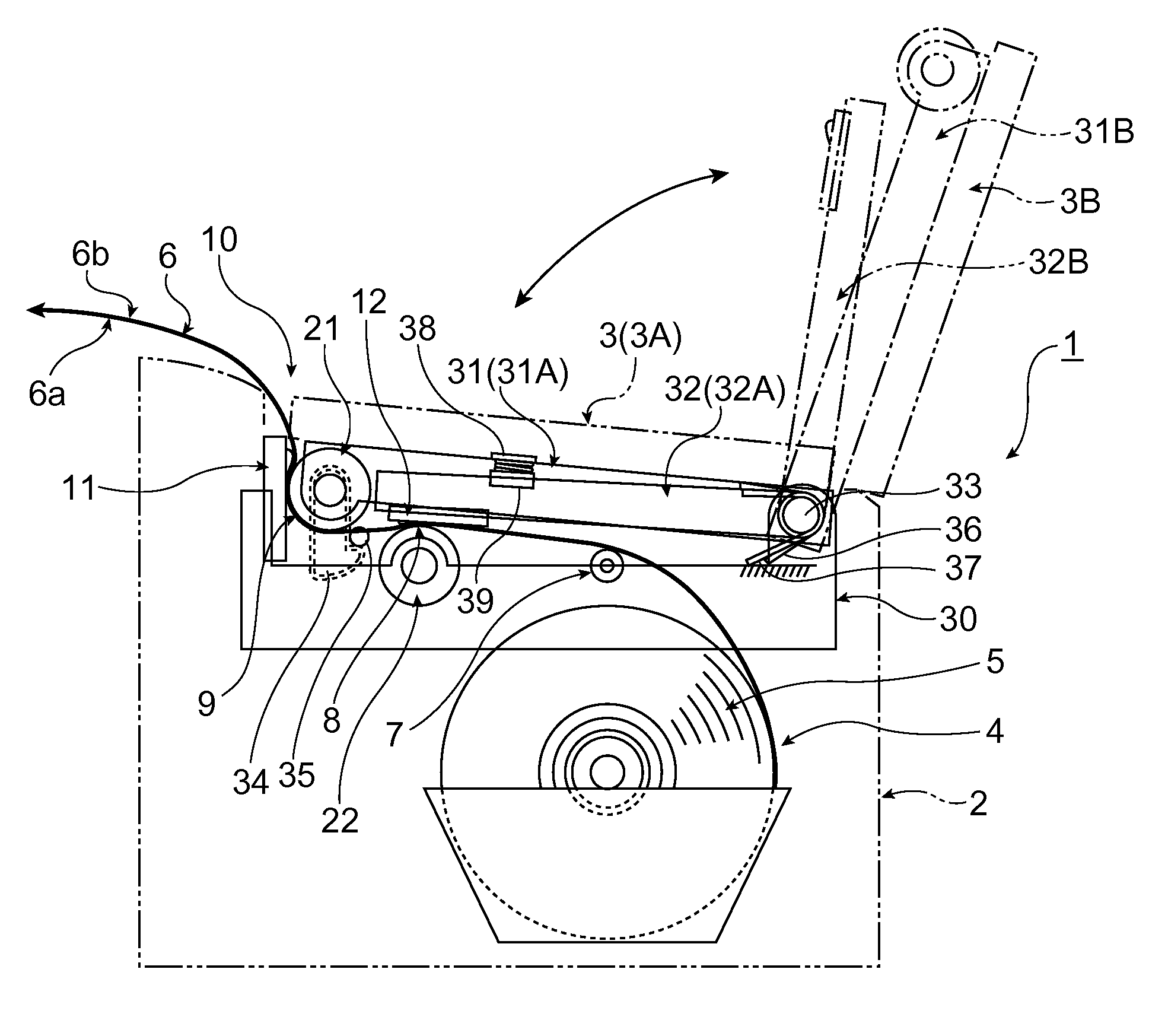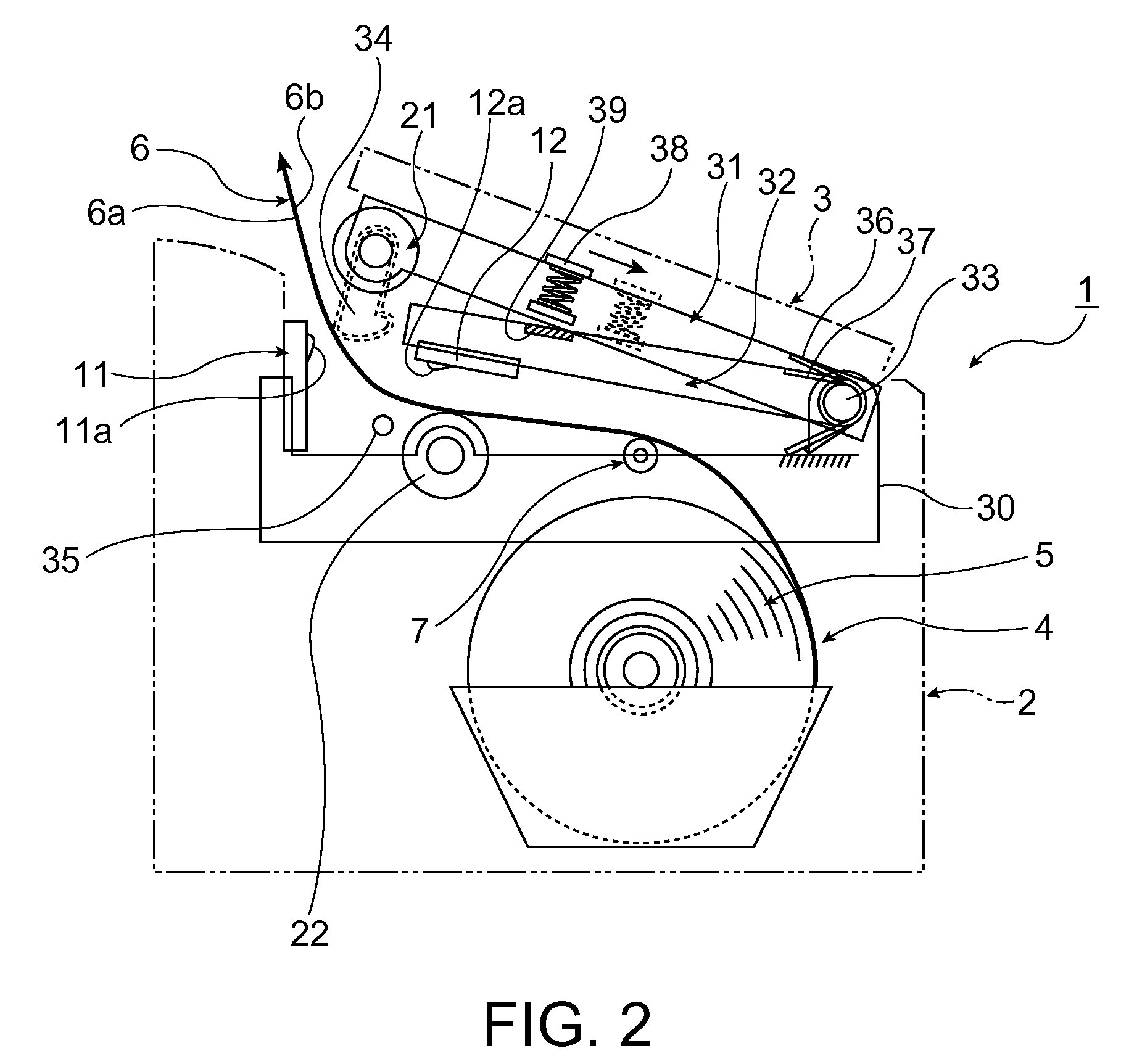Thermal printer
a printer and thermal technology, applied in the field of thermal printers, can solve the problems of difficult positioning, paper transportation load, and inability to print optimally on only one side, and achieve the effect of convenient configuration
- Summary
- Abstract
- Description
- Claims
- Application Information
AI Technical Summary
Benefits of technology
Problems solved by technology
Method used
Image
Examples
Embodiment Construction
[0037]Preferred embodiments of a thermal printer according to at least one embodiment of the invention are described below with reference to the accompanying figures.
[0038]FIG. 1 describes a double-sided thermal printer according to a preferred embodiment of at least one embodiment of the invention, and FIG. 2 shows the double-sided thermal printer when the operating cover is slightly open.
[0039]The double-sided thermal printer 1 has a basically rectangular box-shaped printer case 2, and an operating cover 3 that is attached to open and close to this printer case 2. The operating cover 3 can open and close between a substantially horizontal closed position 3A and an open position 3B where the operating cover 3 is standing up as indicated by the double-dot dash line in FIG. 1.
[0040]When the operating cover 3 is open, the top end part of the roll paper storage compartment 4 formed inside the printer case 2 is open, and roll paper 5 can be loaded from above into the roll paper storage ...
PUM
 Login to View More
Login to View More Abstract
Description
Claims
Application Information
 Login to View More
Login to View More - R&D
- Intellectual Property
- Life Sciences
- Materials
- Tech Scout
- Unparalleled Data Quality
- Higher Quality Content
- 60% Fewer Hallucinations
Browse by: Latest US Patents, China's latest patents, Technical Efficacy Thesaurus, Application Domain, Technology Topic, Popular Technical Reports.
© 2025 PatSnap. All rights reserved.Legal|Privacy policy|Modern Slavery Act Transparency Statement|Sitemap|About US| Contact US: help@patsnap.com



